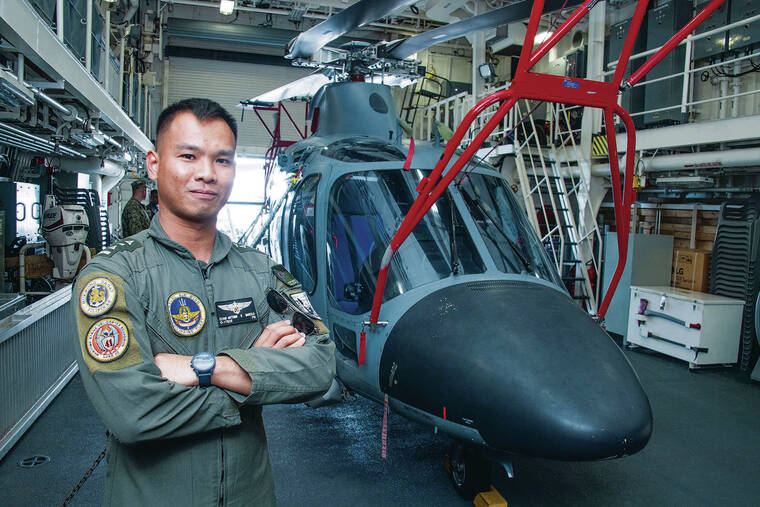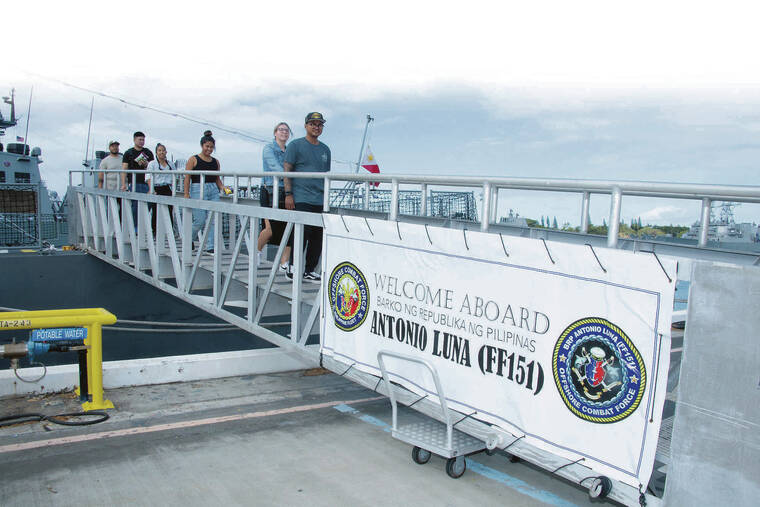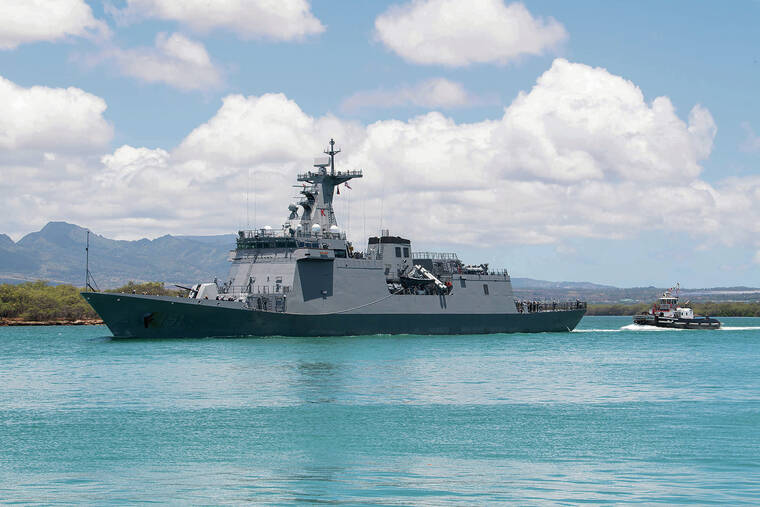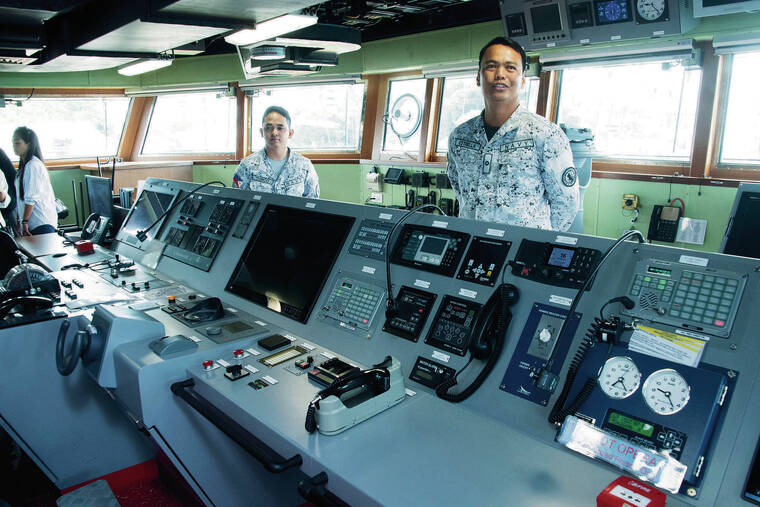The Philippine navy’s newest ship is participating in the biennial Exercise Rim of the Pacific off
Hawaii. The guided-missile frigate BRP Antonio Luna, commissioned in March 2021, departed Pearl Harbor Tuesday as one of the 38 ships participating this year in the world’s largest recurring naval war game.
The at-sea training kicks off amid the anniversary of an international court ruling in favor of the Philippines over a territorial dispute between Manila and Beijing. During their time in Hawaii, the crew of the Luna also connected with Hawaii’s Filipino community.
The Philippines has a long and complicated history with the United States. The Luna’s namesake is a famous general who fought against the Americans in
the Philippine-American War when the U.S. military launched a campaign to re-colonize the Philippines
after driving out the archipelago’s previous Spanish
occupiers.
But since declaring independence after World War II, the Philippines has maintained close trade and military ties to the United States. Hawaii, with its large Filipino community, has played a particularly important role in the relationship between the two countries.
During the harbor phase of RIMPAC, where ships docked in port to refuel and to allow crews to train and socialize, some members of Luna’s crew were able to visit friends and relatives in Hawaii.
“(Hawaii’s Filipino community members) are hospitable and have been taking care of our ship’s crew since day one,” said Luna’s commander, Capt. Charles Villanueva. “A lot of (the crew) have seen their families already and met some few friends we call common acquaintances in the Philippines. So really, we are enjoying (Hawaii) and it’s a great opportunity for us to mingle with the Filipinos again in this area of the world.”
Luna will be participating in anti-submarine warfare maneuvers and conducting live-fire training off the Hawaiian Islands.
“This is the first time that we will be able to fire our guns on moving targets,” Villanueva said. Ships will be targeting a series of small remote-controlled boats during the exercise.
The South Korean-built Luna is the second frigate in its class. The first, the BRP Jose Rizal, made its debut at RIMPAC 2020. The Luna’s first deployment was in June 2021 when it sailed to waters off the Philippine island of Palawan near the disputed Spratley Islands, where the Chinese military has been setting up bases to assert its claims.
The Philippines is one of several countries embroiled in territorial disputes with China, which claims almost the entire South China Sea as its exclusive territory under a maritime border called the “nine dash line.” The Philippines launched a legal complaint against China and in 2016 an international court ruled that China’s claims to the Spratleys had “no legal basis.”
Tuesday was the sixth anniversary of the ruling, but since then the Chinese military has only increased its presence. The standoff has increasingly militarized the South China Sea, a critical waterway through which a third of all international trade travels.
“There are some countries that are not following the rules-based approaches,” Villanueva said of the challenges in the Pacific region without naming China specifically. “But RIMPAC provides an opportunity for the Philippines to demonstrate its commitment to adhering to rules-based approaches, international cooperation and a peaceful and prosperous Indo-Pacific.”
The Philippines recently elected Ferdinand Marcos Jr., son of the late dictator Ferdinand Marcos, as its new president. The Marcos family went into exile in Hawaii after the People Power revolution ousted Marcos in February 1986. Marcos died at St. Francis Medical Center in Honolulu on Sept. 28, 1989.
While campaigning, Marcos Jr. said he would
continue many of the policies of his controversial predecessor, Rodrigo Duterte, and would pursue closer ties with China. He has touted his friendship with Chinese officials, argued he can better negotiate with Beijing and suggested he would be willing to set aside the 2016 court ruling to pursue a new agreement with China.
Though Duterte sought closer ties with China, and Marcos Jr. has pledged the same, public opinion in the Philippines has turned sharply against China. Chinese warships and fishing vessels have intimidated, chased and sometimes attacked Filipino fishermen
in areas Beijing claims. Last month, Filipino fishermen who have been pushed out of their traditional fishing grounds by Chinese warships and fishing vessels protested imports of seafood from China.
On Tuesday, Marcos Jr.’s newly appointed foreign
affairs secretary, Enrique Manalo, said in a statement on the anniversary of the international ruling that “these findings are no longer within the reach of denial and rebuttal, and are conclusive as they are indisputable, (we) firmly reject attempts to undermine it … even erase it from law, history and our collective memories.”
U.S. Secretary of State Antony Blinken released a statement of support Tuesday saying “we call again on (Beijing) to abide by its obligations under international law and cease its provocative behavior,” adding that “an armed attack on Philippine armed forces, public vessels, or aircraft in the South China Sea would invoke U.S. mutual defense commitments” under the 1951 U.S.-Philippines Mutual Defense Treaty.
On Wednesday, a Twitter account associated with
China’s Ministry of Foreign Affairs posted several tweets asserting the international court ruling itself was illegal and condemning U.S. moves in the region, declaring, “The so-called award of the South China Sea arbitration is against international law … It is illegal, null and void. China is upholding international rule of law by not accepting or recognizing it.”








